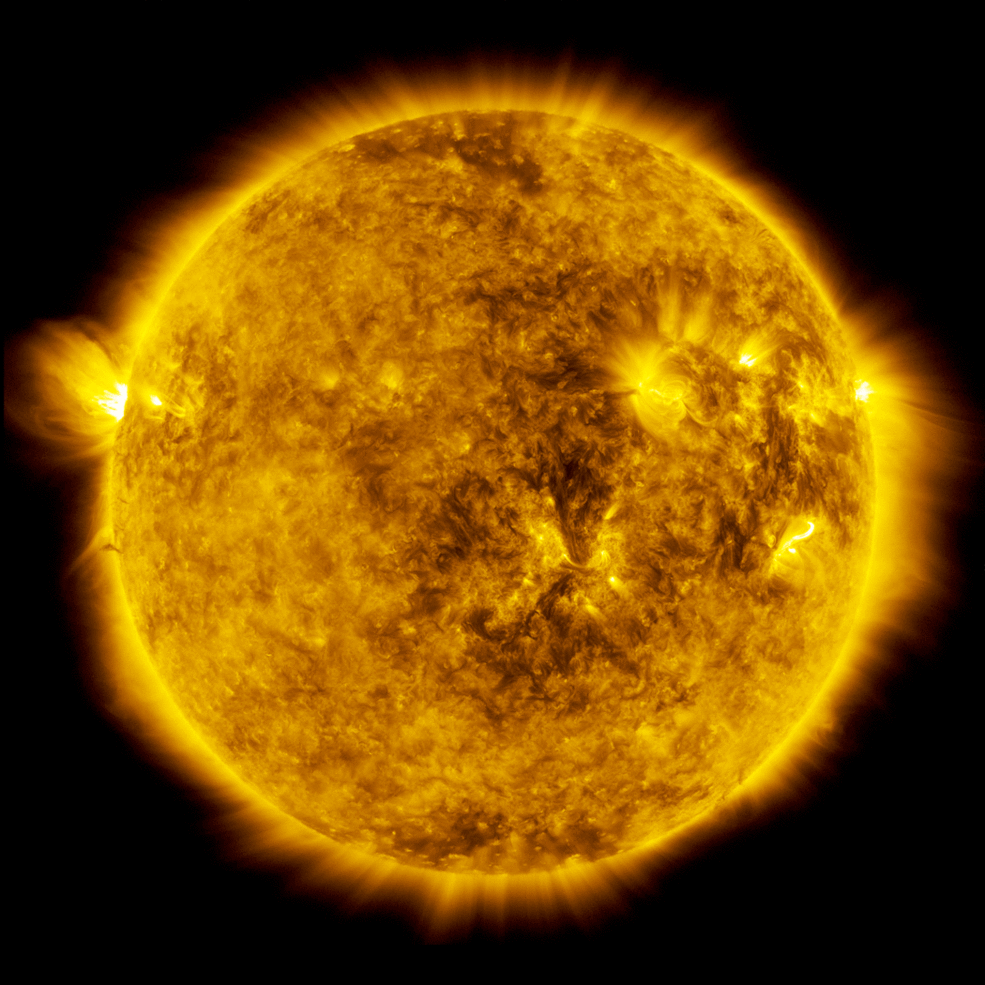Watch a Partial Solar Eclipse From Space
It’s a preview of even more spectacular things to come

With all of the exciting discoveries on far-flung planets, it’s no wonder that Earth’s less glamorous neighbor, the moon, doesn’t get much love. But every once in a while, it catches scientists’ eyes—and on May 25, it did just that when it passed in front of the sun.
NASA’s Solar Dynamics Observatory, the agency’s 24/7 sun-watching satellite, spotted the partial eclipse from space. The event took about an hour and the moon ended up covering about 89 percent of the sun at its peak.
The image is crisp and clear, in part because the moon doesn’t have an atmosphere to distort the sun’s magnificent light. In a press release, NASA notes that the planet’s bumpy surface can be spotted—proof of the craters and lumps the moon picked up as it was pummeled again and again by meteors and other objects.
During a solar eclipse, the moon passes between Earth and the sun. Due to the movements of all three celestial bodies, that happens frequently: According to NASA, there are two to three eclipses each year, and over the 5,000 years between 1999 and the year 3000 there will be nearly 12,000 eclipses.
Of course, this eclipse is nothing compared to what’s in store. On August 21, the moon will completely obscure the sun—the first total eclipse to cross the United States since 1978.
“The Great American Eclipse” is generating lots of excitement among scientists and civilians alike. As Deborah Netburn reports for The Los Angeles Times, astronomers are preparing to use the three-minute-long eclipse to its full advantage, collecting data from all over the world and praying for clear skies.
It’s been decades since a human set foot on Earth’s closest satellite, and that doesn’t seem set to change any time soon. But that doesn’t mean it’s fallen entirely out of favor. Since 2009, NASA’s Lunar Reconnaissance Orbiter has been circling the moon and collecting data. And as Smithsonian.com reported earlier this year, teams of entrepreneurs are competing to get to the moon first in pursuit of a $20 million prize.
Whether it’s blocking Earth’s view of the sun or beckoning to curious adventurers, the moon is worth noticing. It may be barren—but it is certainly never boring.
/https://tf-cmsv2-smithsonianmag-media.s3.amazonaws.com/accounts/headshot/erin.png)
/https://tf-cmsv2-smithsonianmag-media.s3.amazonaws.com/accounts/headshot/erin.png)